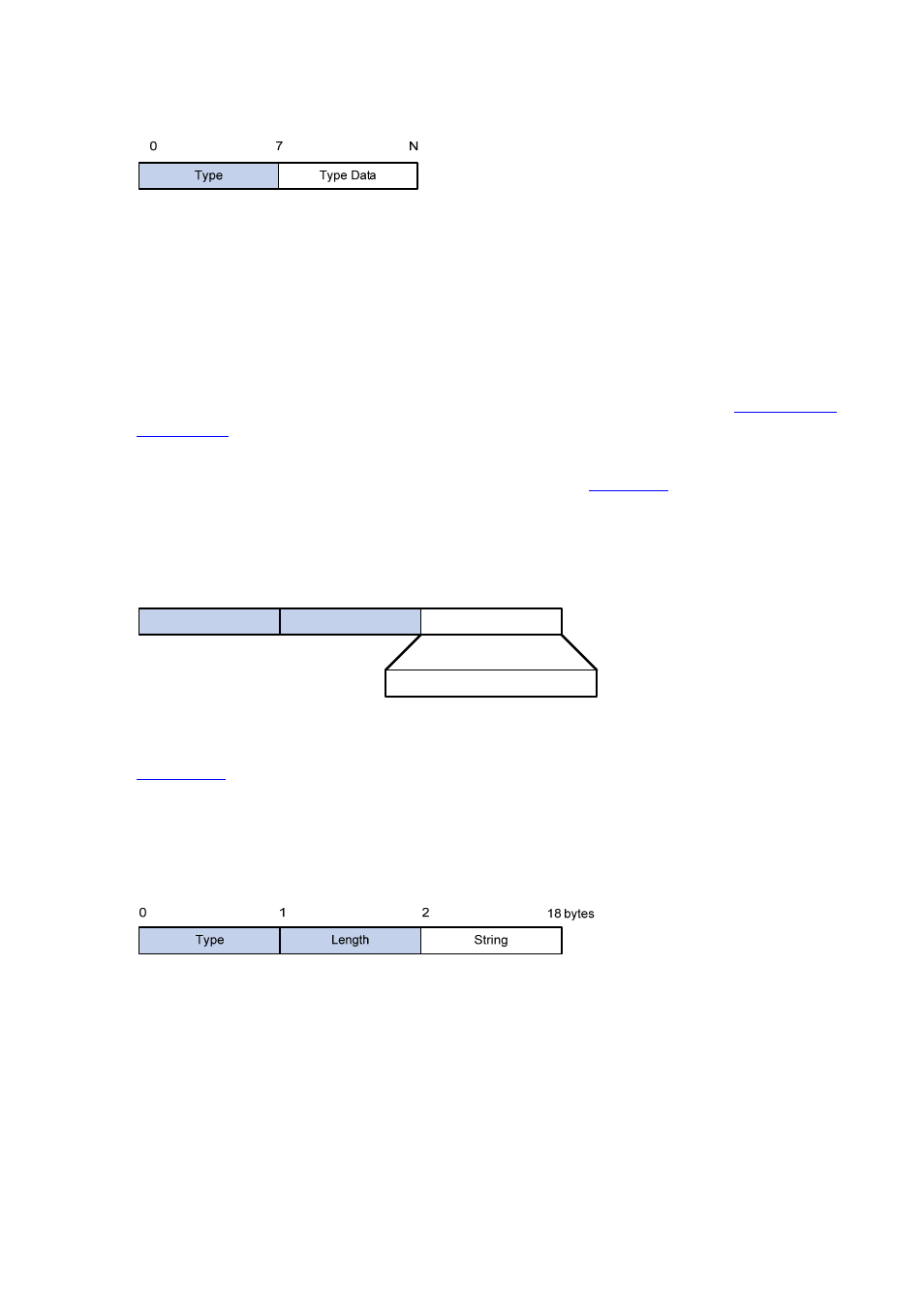Eap over radius, Eap-message, Message-authenticator – H3C Technologies H3C WX6000 Series Access Controllers User Manual
Page 386: 1x authentication triggering, Unsolicited triggering of a client, Figure 35-5, The type

35-5
Figure 35-5 Format of the Data field in an EAP request/response packet
Identifier: Helps match responses with requests.
Length: Length of the EAP packet, including the Code, Identifier, Length, and Data fields, in bytes.
Data: Content of the EAP packet. Its format is determined by the Code field.
EAP over RADIUS
Two attributes of RADIUS are intended for supporting EAP authentication: EAP-Message and
Message-Authenticator. For information about RADIUS packet format, refer to
.
EAP-Message
The EAP-Message attribute is used to encapsulate EAP packets.
format. The value of the Type field is 79. The String field can be up to 253 bytes long. If the EAP packet
is longer than 253 bytes, it can be fragmented and encapsulated into multiple EAP-Message attributes.
Figure 35-6 Encapsulation format of the EAP-Message attribute
0
15
Type
String
7
Length
N
EAP packets
Message-Authenticator
shows the encapsulation format of the Message-Authenticator attribute. The
Message-Authenticator attribute is used to prevent access requests from being snooped during EAP or
CHAP authentication. It must be included in any packet with the EAP-Message attribute; otherwise, the
packet will be considered invalid and discarded.
Figure 35-7 Encapsulation format of the Message-Authenticator attribute
802.1X Authentication Triggering
802.1X authentication can be initiated by either a client or the device.
Unsolicited triggering of a client
A client can initiate authentication unsolicitedly by sending an EAPOL-Start packet to the device. The
destination address of the packet is 01-80-C2-00-00-03, the multicast address specified by the IEEE
802.1X protocol.
